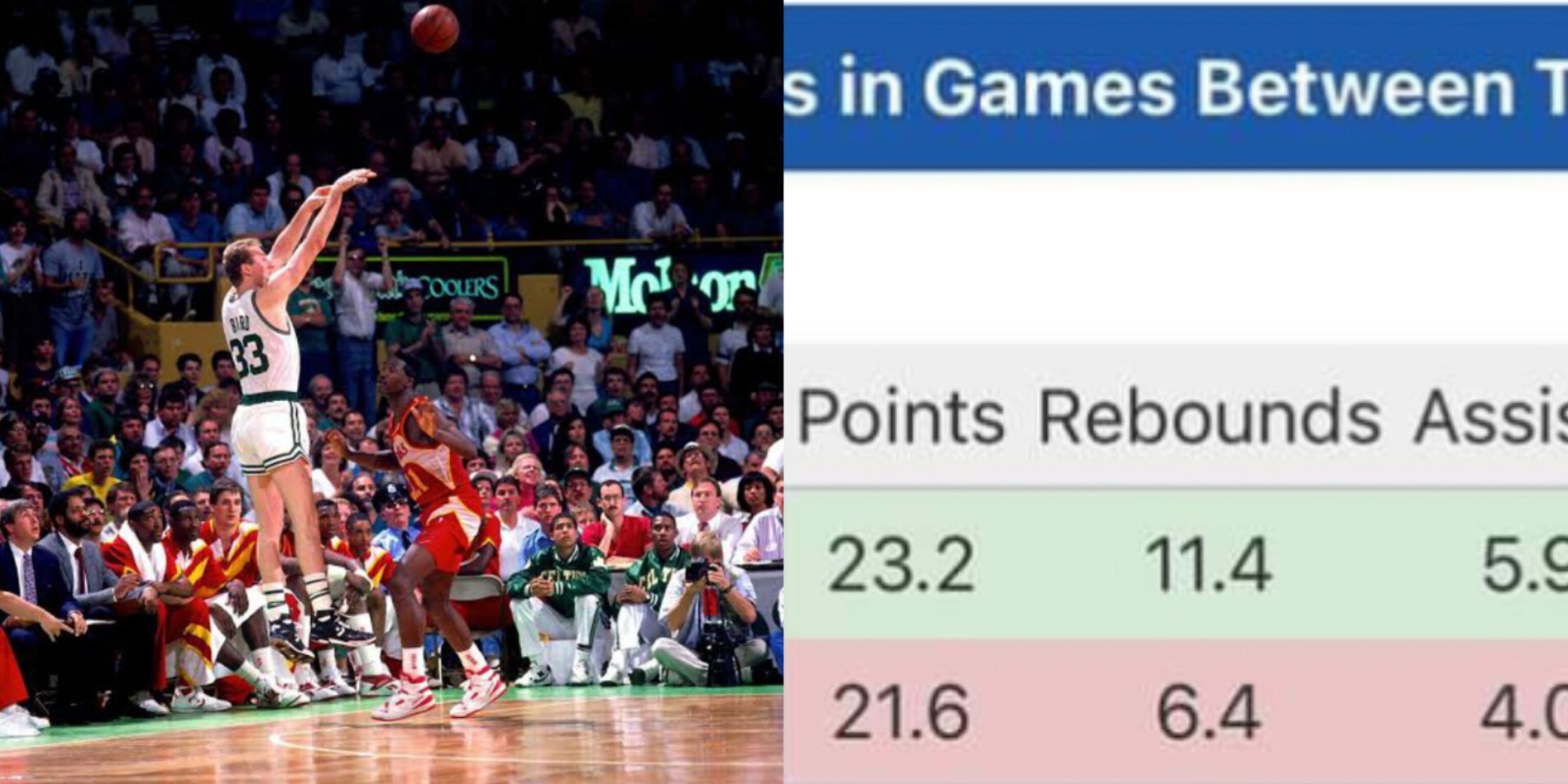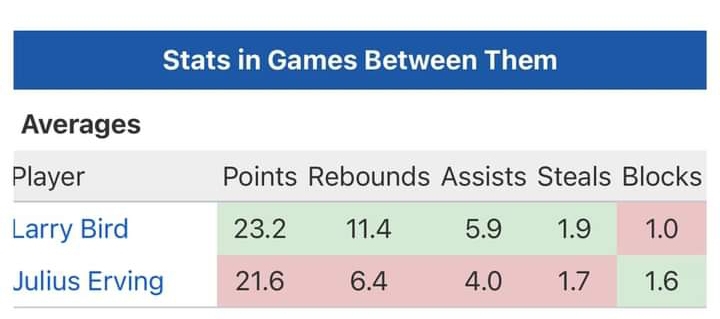Larry Bird’s assertion, “Do numbers lie? Of course they don’t…” in response to Julius Erving’s comments, has stirred considerable debate in the basketball community. Bird’s decision to invoke statistics to illustrate his superior performance over Dr. J underscores the long-standing rivalry and respect between these two basketball legends.

Larry Bird, a forward for the Boston Celtics, is renowned for his shooting, playmaking, and defensive prowess. His career stats reflect his all-around game and his significant impact on the court. Over his 13-season career, Bird averaged 24.3 points, 10.0 rebounds, and 6.3 assists per game. Bird’s shooting percentages—49.6% from the field, 37.6% from three-point range, and 88.6% from the free-throw line—demonstrate his efficiency and versatility as a scorer. Furthermore, Bird’s three MVP awards and two NBA Finals MVP awards highlight his dominance during the 1980s.
Julius Erving, known for his athleticism and creativity, was a transformative figure in the game. Erving’s NBA career averages—22.0 points, 6.7 rebounds, and 3.9 assists per game—are impressive, but they do not fully capture his impact. Erving also had a stellar ABA career, where he averaged 28.7 points, 12.1 rebounds, and 4.8 assists per game. When combining his ABA and NBA stats, Erving’s career totals become even more formidable. Despite these impressive numbers, Dr. J was not primarily known for his shooting range, particularly from beyond the arc.
Bird’s comments likely allude to these statistical comparisons, emphasizing areas where he excelled over Erving. For instance, Bird’s superior three-point shooting is a notable distinction. In an era where the three-pointer was not as heavily emphasized, Bird’s ability to consistently hit from long range set him apart. His career three-point shooting percentage of 37.6% far exceeds Erving’s 25.0%. Additionally, Bird’s free-throw percentage of 88.6% is significantly higher than Erving’s 77.7%, showcasing Bird’s superior accuracy from the charity stripe.
Bird’s remark, “Do numbers lie? Of course they don’t…” is a direct challenge to Dr. J’s claim about three-point shooting. By pointing to the statistical evidence, Bird aims to solidify his argument that he outperformed Erving in key areas of the game. This debate is not just about numbers, but also about legacy and the different styles of play that defined each player’s career.

Fans and analysts have taken sides in this debate, with some supporting Bird’s statistical evidence while others emphasize Erving’s impact beyond the numbers. Erving’s influence on the game, particularly his role in popularizing the modern style of play and his contributions to the ABA-NBA merger, is a significant part of his legacy. Bird, meanwhile, is celebrated for his competitive spirit, his basketball IQ, and his ability to deliver in clutch moments.
The conversation between Bird and Erving highlights the complexities of comparing players from different eras and with different playing styles. Bird’s reliance on statistics to make his case underscores the importance of numbers in evaluating performance, but it also raises questions about what metrics best capture a player’s true impact. Erving’s career, rich with highlights and pioneering moments, demonstrates that greatness can be measured in various ways.

In conclusion, Larry Bird’s comment, “Do numbers lie? Of course they don’t…” serves as a reminder of the power of statistics in sports debates. Bird’s impressive career numbers support his argument of outperforming Julius Erving in certain areas. However, the legacy of both players is shaped by more than just numbers. Their unique contributions to the game, their influence on subsequent generations, and their unforgettable moments on the court ensure that the debate between Bird and Erving remains a compelling and multifaceted discussion in basketball history.



